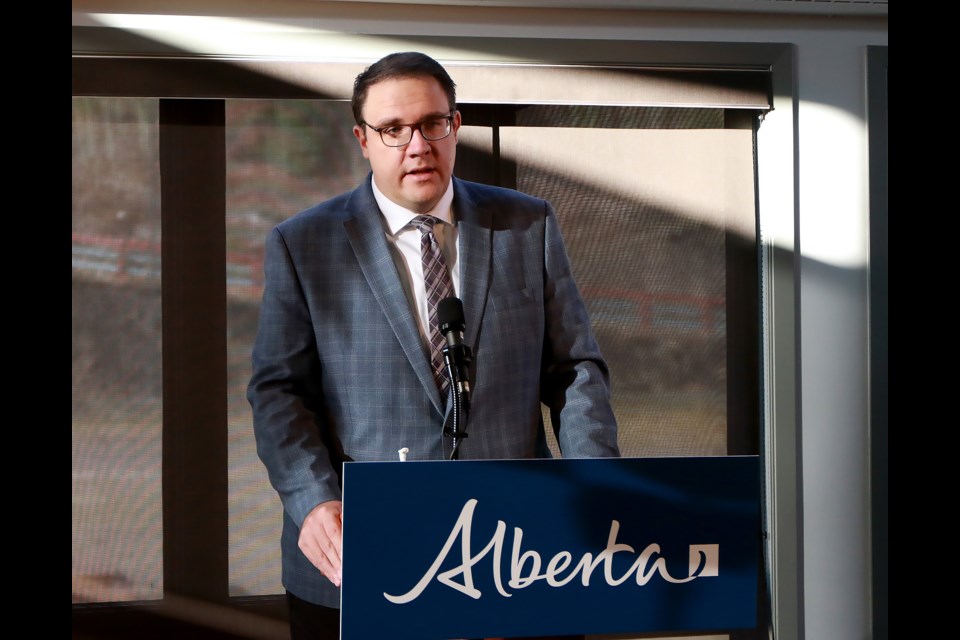KANANASKIS COUNTRY – A new phone number to report violations and safety incidents on public provincial parks land was introduced by the province.
The number – 310-land – was announced Monday (Oct. 18) at the Canmore Nordic Centre as the province reiterated previously announced funding for Kananaskis Country and finishing the hiring of 20 additional conservation officers.
Jason Nixon, the minister of environment and parks, said the phone number is an amalgamation of 15 different regional and department lines that could have previously been used by visitors to the provincial parks. It is designed to help report damage to public land, noise complaints and general land-related inquiries and information requests.
“It’s one place where they can report incidents that are taking place within public parks and be able to interact with conservation enforcement officers,” Nixon said of the phone line, which will operate 24 hours a day, seven days a week. “Right now that’s happening with at least 15 different lines that will be consolidated into one line.”
Nixon also said license plate readers will also have a “very good chance” of being ready later this fall.
He didn’t have the exact costs of the license reader program, but said it was “the more affordable cost” compared to a pass system used by Banff National Park.
Nixon added a pass system would require kiosks and staff to collect fees, while Kananaskis Country has several entry points unlike the lone Trans-Canada Highway in and out of Banff National Park.
Nixon said the ministry estimates there has been a compliance rate of between 75 and 90 per cent in following rules such as staying on trails, not littering and not interfering with wildlife since the Kananaskis Country pass was introduced earlier this year.
“I think we’ll continue to see a high level of compliance similar to what we see in Banff National Park,” Nixon said.
The Outlook reported last week the user pass for Kananaskis Country had generated about $10 million for provincial coffers to aid in the cost of conservation efforts, search and rescues, services and infrastructure costs.
The move came after more than five million visitors took in Kananaskis Country in 2020 and put a strain on resources for the popular Albertan region.
In 2021, more than three million people have visited Kananaskis Country, according to the ministry’s statistics.
More than 37,000 of the roughly 253,000 Kananaskis Country passes that have been sold have been issued to First Nations individuals and about 13,000 have gone to low-income Alberta residents, according to Bridget Burgess, a communications advisor for Alberta Environment and Parks.
A daily pass costs $15 per vehicle, while a yearly pass allows for two vehicles to be registered and is $90.
The province estimated the conservation pass would generate $15 million in revenue during its first year and that all revenue would be used for expenses in Kananaskis Country.
There has been more than $160 million spent in Kananaskis Country since 2013, including $9 million for the William Watson Lodge, $16 million to repair flood damage in 2013 at the Kananaskis Country Golf Course and $1 million for planning and design upgrades at the Canmore Nordic Centre.
Darren Robinson, the vice-chair of the Kananaskis Improvement District, said the added money through the pass will aid in maintaining resources in Kananaskis.
“With more visitors comes significant pressures on our existing services and facilities. We need to make those investments back into the region in order to ensure sustainability and support conservation and public safety.”




